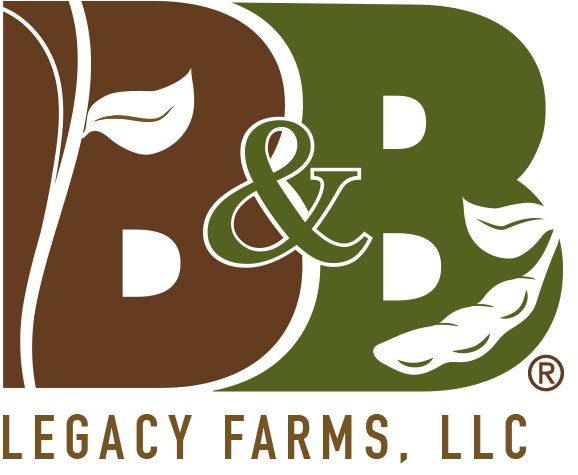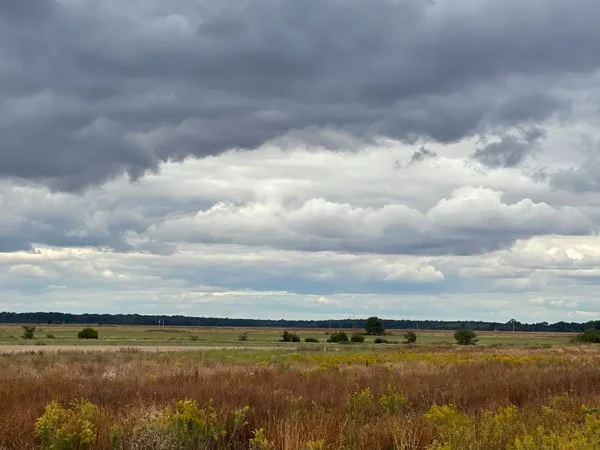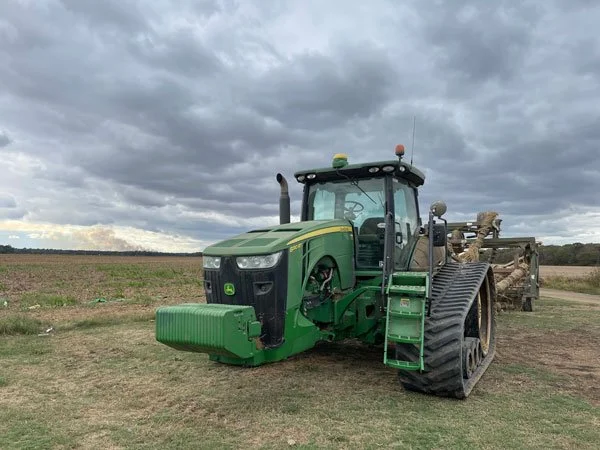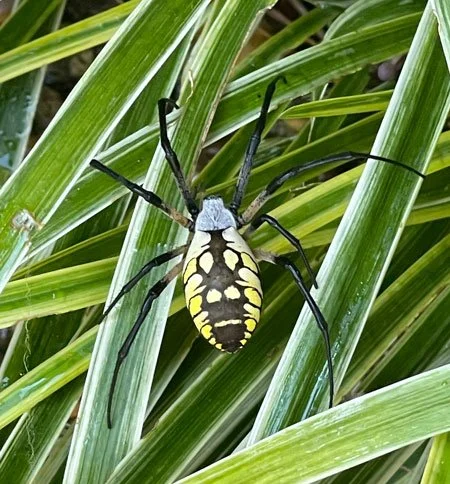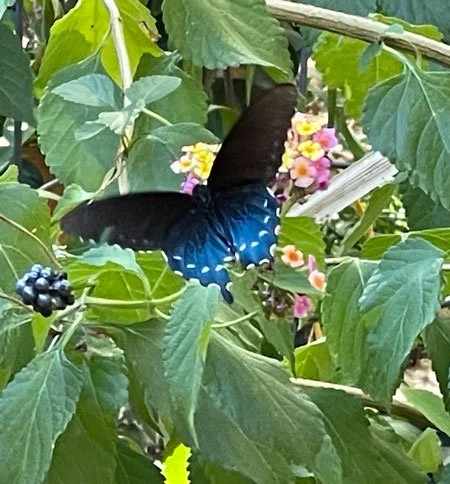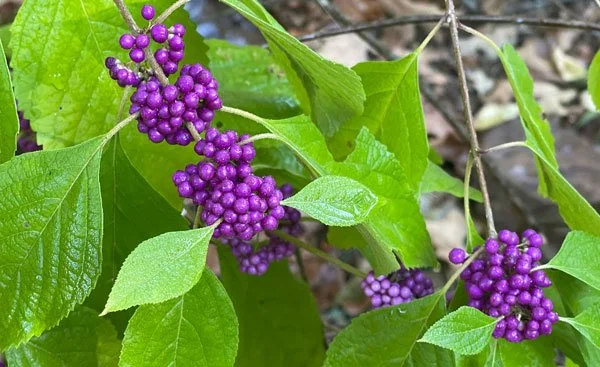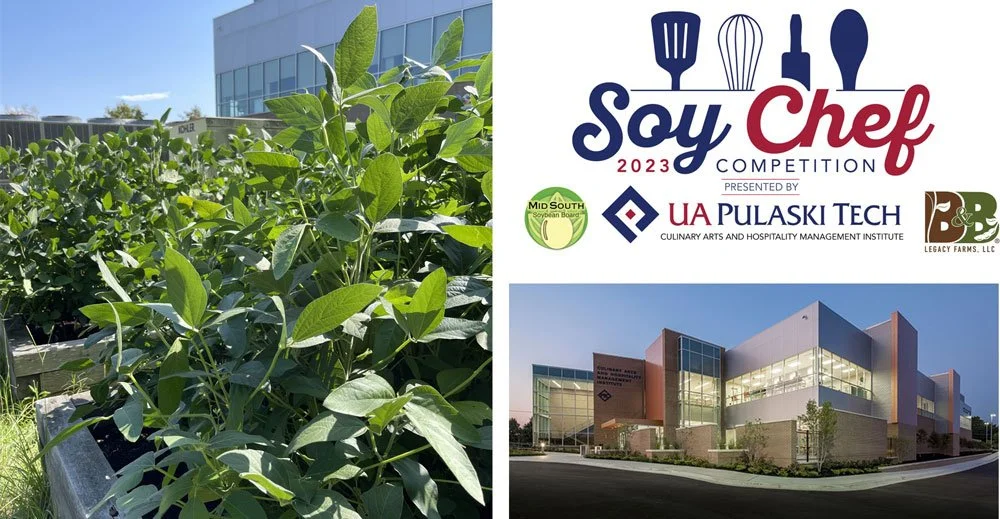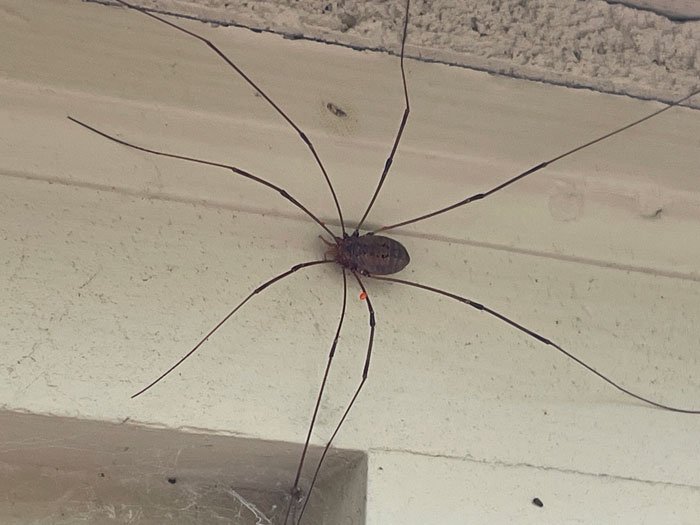Completing the Final Fields for the 2023 Harvest
The change of season came into clear view this month.
Photo by B. Doyle.
A cold front mid-month brought a rapid drop in temperatures.
This is the Delta’s version of big sky country!
Temperatures spiked and dipped from a high of 89 to lows in the 40s by late month.
The hummingbirds left and new visitors came into closer view.
The Orb-weaver (yellow garden) spider and Pipeline Swallowtail butterfly were guests in the country, taking advantage of the fall temperatures.
The American Beautyberry (Callicarpa americana) was stunning this month.
I have always admired this plant, but never knew much about it.
American Beautyberry, an ancient plant, is consumed by birds, animals, and people. It is reported that native tribes used the roots, leaves, and branches to treat malarial fevers and rheumatism and the roots were used to treat dizziness, stomachaches, and dysentery. In the early 1900s, farmers crushed the leaves and placed them under the harnesses of horses to repel mosquitoes.
In 2006 Agricultural Research Service (ARS) scientists in Oxford, Miss., isolated compounds from American Beautyberry that enable its crushed leaves to repel mosquitoes. Grandpa was right! Compounds from this plant also show potential as repellents against some ticks. Over 100 years later, we are still learning about the diverse benefits of this native plant.
The same is true regarding the nutritional value of whole soybeans in America.
Save the Date!
Join the culinary faculty and student chefs to explore and learn more about the future of whole soy foods.
You will receive a personal invitation to join us Friday, November 7th at 10:00 a.m.
Be looking for the invitation to register through email.
This webinar will be hosted live, and will take you into the kitchen lab with the chefs!
See what the students can teach us all about this ancient and nutritious food that grows all around us.
Registration opens soon.
Stay tuned.
Have a great Halloween!
~Karen
P.S. Last harvest insect photo.
Lots of folklore surrounds this large insect that hangs out prior to Halloween.
This “daddy long-legs,” also called “harvestmen,” looks like a spider because it has 8 eight legs, but according to the U.S. National Park Service, they are not spiders at all! Instead of eight eyes, they have two eyes that look sideways. They lack silk glands and spinners, so they don’t make webs. They are classified as arachnids. And to dispel the final myth this season, they are not poisonous. They do not have venom glands or fangs. Great news! One less thing to worry about.
An ancient insect, English myth from the 1600s has it that each “daddy longlegs” possessed a scythe that would help local farmers harvest crops. Killing a “harvestman” was considered bad luck. According to an old French legend, seeing a daddy longlegs in the evening is a good thing, foretelling good fortune, happiness, and hope. Source: Insectopedia
Then there is the smell.
Hope you enjoyed this view from the country.
Have a great rest of the month.
